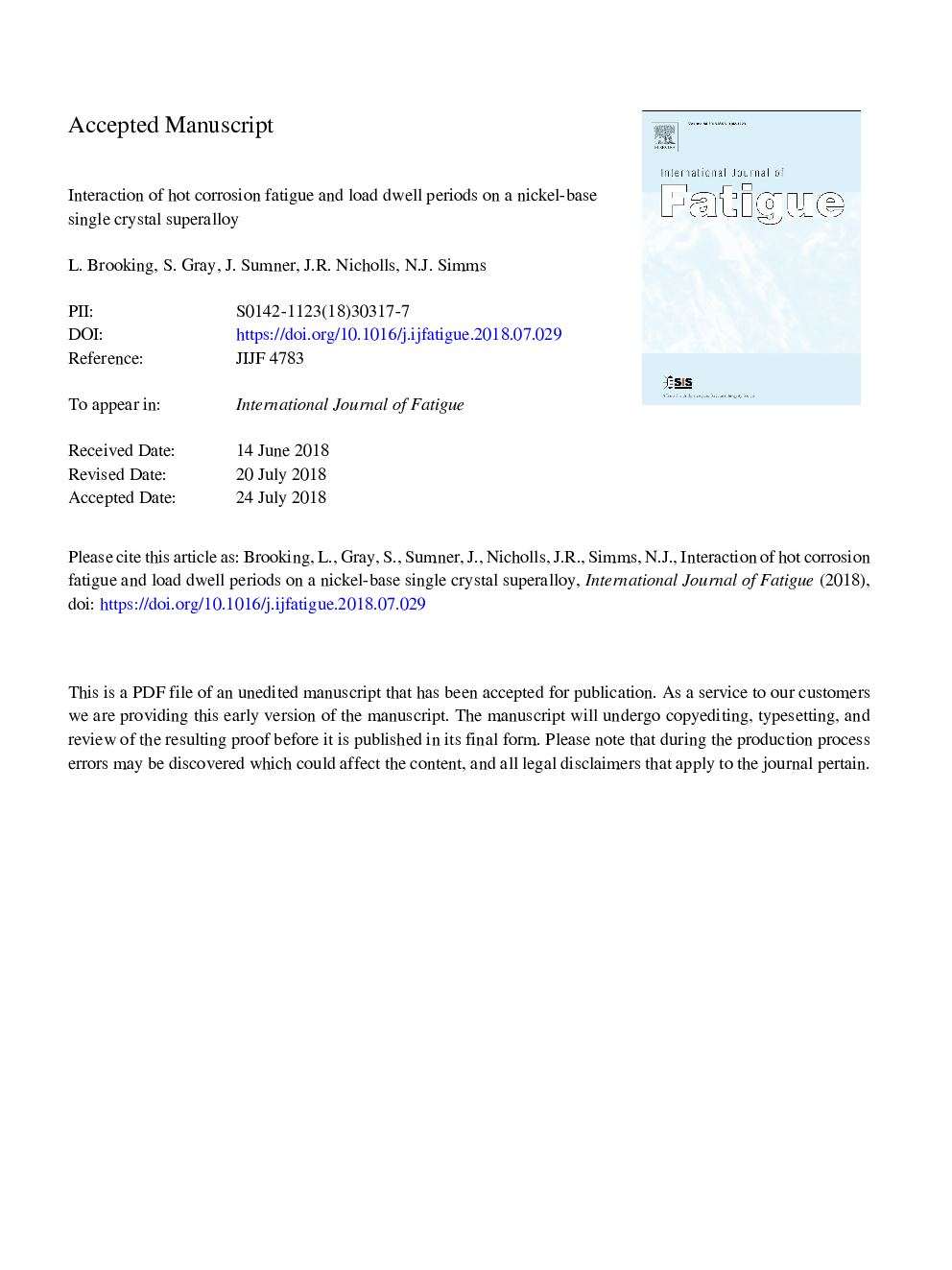| Article ID | Journal | Published Year | Pages | File Type |
|---|---|---|---|---|
| 7171221 | International Journal of Fatigue | 2018 | 16 Pages |
Abstract
The effects of type II hot corrosion on the fatigue resistance of turbine blade superalloys is of growing interest as gas turbine (GT) original equipment manufacturers (OEMs) strive to optimise the operational efficiencies and versatilities of GT systems. Hot corrosion fatigue has been observed in the under platform regions of first stage GT blades, this location is subject to both relatively high principal stresses and stress gradients, combined with temperatures up to those associated with type II hot corrosion (500-700â¯Â°C). The effect of the deposition flux of corrosive salt species and the tensile stress dwell period on the fatigue performance and resultant crack morphologies of single crystal (SC) superalloy CMSX-4 has been studied at 550â¯Â°C. Deposit recoat methodologies were applied to specimens that were cyclically fatigued with a load-controlled trapezoidal waveform. It was observed that introducing a longer dwell period increased the number of {1â¯0â¯0} crack initiations and reduced the fatigue life (load cycles to failure). Optical and SEM microscopy and EDX techniques were used to examine specimen fractography, and mechanisms of crack advance and propagation discussed.
Related Topics
Physical Sciences and Engineering
Engineering
Mechanical Engineering
Authors
L. Brooking, S. Gray, J. Sumner, J.R. Nicholls, N.J. Simms,
